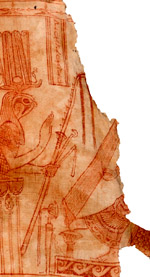Center, Textile Research

Egyptian Textiles and Their Production: ‘Word’ and ‘Object’
Date of this Version
3-2-2020
Document Type
Book Chapter
Citation
Published in Maria Mossakowska-Gaubert, ed., Egyptian Textiles and Their Production: ‘Word’ and ‘Object’ (Hellenistic, Roman and Byzantine Periods) (Lincoln, NE: Zea Books, 2020).
doi 10.32873/unl.dc.zea.1079
Abstract
The question of the different kinds of loom used in ancient Egypt is one of the most crucial issues to understanding the evolution of textile production and its technological development in the Nile Valley. However, sources concerning looms (archaeological, iconographic and written) from the Pharaonic era until the Arab medieval period are meagre, and many research questions remain open. This article is an attempt at a new interpretation of some evidence, particularly iconographic and papyrological, which could add new data to the study of weaving looms used in Egypt of the early Roman period (1st–2nd century AD).
Included in
Africana Studies Commons, African Languages and Societies Commons, Classical Archaeology and Art History Commons, Fiber, Textile, and Weaving Arts Commons, History of Art, Architecture, and Archaeology Commons, History of Science, Technology, and Medicine Commons


Comments
Copyright © 2020 Maria Mossakowska-Gaubert
The article was written within the framework of the MONTEX project. This project has received funding from the European Union's Horizon 2020 research and innovation programme under the Marie Skłodowska-Curie grant agreement No 701479.